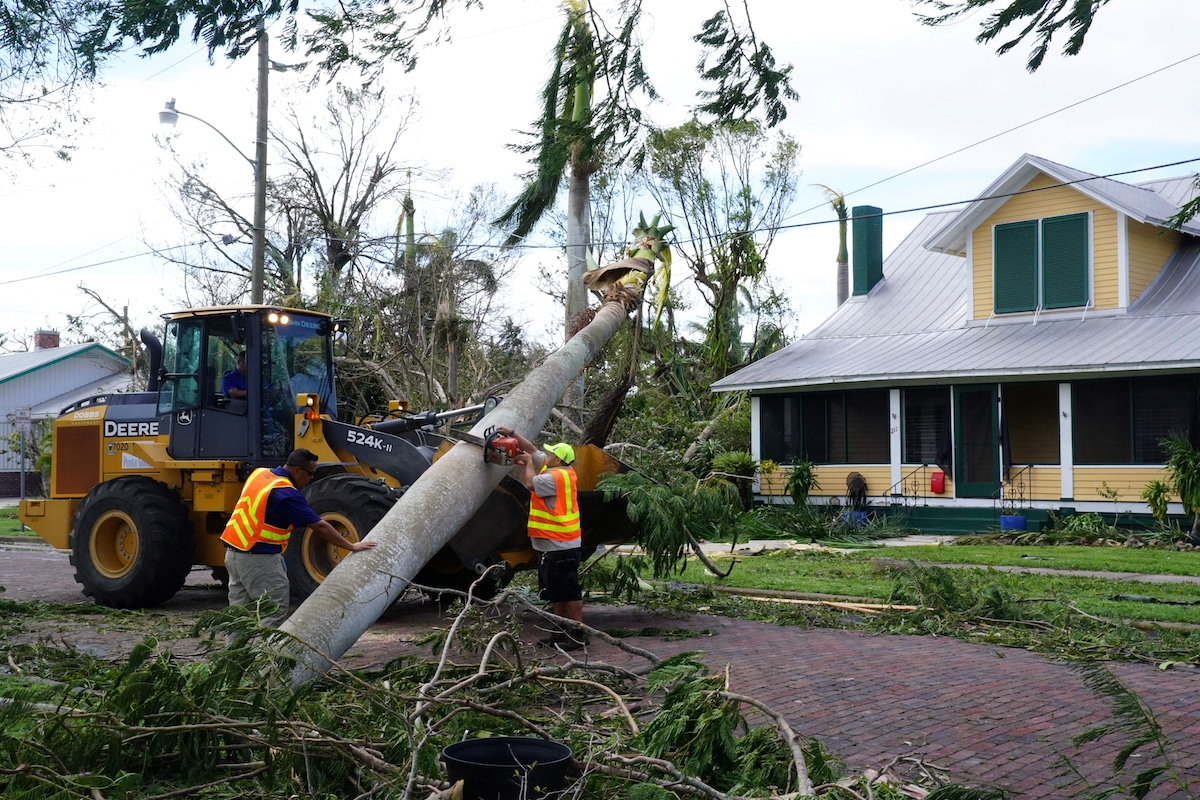Florida’s Three Major Utilities Propose 10% to 20% Rate Hikes, Citing Hurricane Damage, Natural Gas Prices

 Why you can trust us
Why you can trust us
Founded in 2005 as an Ohio-based environmental newspaper, EcoWatch is a digital platform dedicated to publishing quality, science-based content on environmental issues, causes, and solutions.
A combination of climate-fueled extreme weather events and a reliance on fossil fuels could raise the electricity bills of many Floridians this spring.
Three of the state’s largest utilities — Florida Power & Light (FPL), Duke Energy and Tampa Electric Company (TECO) — have asked the state’s Public Service Commission (PSC) to approve rate hikes to cover an increase in natural gas prices and the cost of restoring the grid following Hurricanes Ian and Nicole.
“FPL is seeking recovery of $1.3 billion for incremental restoration costs from Hurricanes Ian and Nicole,” the utility said in a statement reported by WFLA. “As part of FPL’s plan, customers would pay a temporary storm surcharge for 12 months, beginning in April. FPL is also seeking permission to recover about $2.1 billion to make up for the difference between projections and actual costs for natural gas in 2022.”
TECO, meanwhile, said it wanted $130,880,964 to resupply its storm funds. It said its accounts had been drained by the hurricane recovery efforts and the high cost of natural gas due to the ongoing energy crisis.
“The extreme volatility of natural gas prices in 2022, which increased by more than 70 percent over the previous year, resulted in home energy costs reaching near 10-year highs in the United States,” TECO President and CEO Archie Collins said in a letter reported by WFLA.
Duke said its hikes would generate more than $1.23 billion to cover both fuel costs and hurricane recovery.
The rate hikes proposed by the three companies come on top of earlier rate hikes already approved by the PSC, WFLA noted. If the additional approval is granted, FPL and TECO customers could see their rates increase by a further 10 percent in April while Duke customers would see theirs increase by another 20 percent. The PSC has never declined a rate hike request.
For an example of how the approved and proposed hikes could impact Florida customers, an FPL customer living in Northwest Florida who uses 1,000 kilowatt-hours in Northwest Florida would have paid a January bill of $155.60, will pay a $159.79 bill in February and could pay a $173.09 bill in April, according to North Escambia.com. A customer using the same amount elsewhere in the state would pay $129.59 in February and $142.88 in April. A Duke customer using 1,000 kWh would see their April bill increase by around $33.49, the company said, as WFLA reported.
In a statement reported by North Escambia.com, FPL chairman and CEO Eric Silagy acknowledged the challenge posed by the rate hikes.
“FPL has a proven track record of keeping bills below the national average. When events beyond our control — like hurricanes and significant changes in fuel prices — force a change to customer bills, we try to do so in a thoughtful way that minimizes the impact on our customers while balancing the risk of invoices piling up,” he said. “Still, we recognize that every dollar matters, which is why we encourage customers to use FPL’s free tools and simple tips to save energy and money on their electric bills.”
Some of the customers responding to the news in the comments still expressed frustration with the utility’s request.
“That’s just part of doing business,” one said. “There is no reason they should keep passing on poor management mistakes to the customers. This is ridiculous!”
Florida got around 74 percent of its electricity from natural gas in 2021, according to the U.S. Energy Information Administration. FPL especially has come under fire in the past for lobbying against the transition to renewable energy. It funneled at least $8,055,000 towards the campaign for the anti-solar Amendment 1 in 2016. Three years later, when Florida state Senator José Javier Rodríguez proposed a bill permitting landlords to sell rooftop solar energy directly to their tenants without going through the utility first, a consultancy firm that counted FPL as a client advertised on behalf of a rival candidate with the same last name. The original Rodriguez lost by 32 votes.
One could argue, therefore, that the utility is actively working against saving its customers money from storm damage, since the state is often in the path of hurricanes that the climate crisis is making more extreme. For example, scientists calculated that Hurricane Ian was at least 10 percent wetter than it would have been without global heating, as CNN reported. In terms of economic damages, it was the costliest climate-fueled extreme weather event of 2022. Hurricane Nicole, meanwhile, made landfall November 10, the latest date on record for Florida’s Atlantic coast, as NPR reported at the time. Yale Climate Connections meteorologist Jeff Masters told NPR that rising ocean temperatures meant that hurricanes could form both earlier and later than in the past.
Subscribe to get exclusive updates in our daily newsletter!
By signing up, you agree to the Terms of Use and Privacy Policy & to receive electronic communications from EcoWatch Media Group, which may include marketing promotions, advertisements and sponsored content.

 233k
233k  41k
41k  Subscribe
Subscribe 




